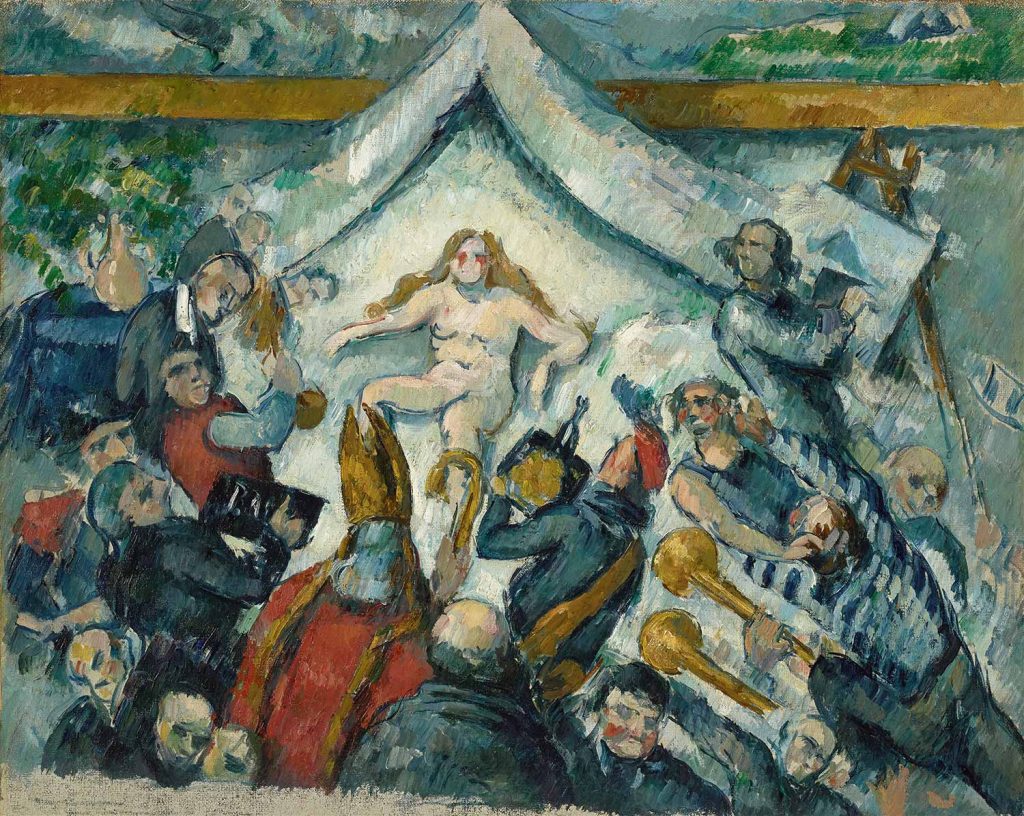
The Eternal Feminine by Paul Cézanne was created in 1877. The painting is in J. Paul Getty Museum Los Angeles. The size of the work is 43,5 x 53,3 cm and is made as an oil on canvas.
The meaning of this enigmatic painting is unclear, and it has been known by several titles. This woman is confronted by devotees from different arts and occupations, among them a mitered bishop, whose admiration seems intrusive, even aggressive. A painter sometimes identified as Eugène Delacroix stands at his easel painting the scene. The bald figure at the painting’s bottom may be Cézanne himself. Whether she encourages their adoration, passively accepts it, or is trapped by her cult is unclear. Like many of Cézanne’s nudes, the woman’s face is nearly blank, except for her red eye sockets. Around 1877 Cézanne began to use the parallel diagonal strokes seen here to impose order and to unify his picture’s surface. (Read more in J. Paul Getty Museum)
About the Artist: French artist and Post-Impressionist painter Paul Cézanne was born in Aix-en-Provence. In Paris, Cézanne met the Impressionist Camille Pissarro. Initially, the friendship formed in the mid-1860s between Pissarro and Cézanne was that of master and disciple, in which Pissarro exerted a formative influence on the younger artist. Cézanne’s early work is often concerned with the figure in the landscape… Read more
You can order this work as an art print on canvas from canvastar.com

